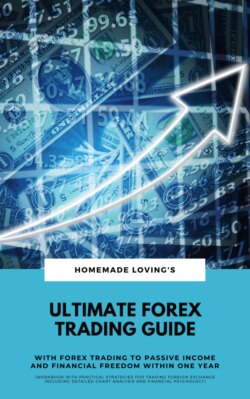Читать книгу Ultimate Forex Trading Guide: With Forex Trading To Passive Income And Financial Freedom Within One Year (Workbook With Practical Strategies For Trading Foreign Exchange Including Detailed Chart Analysis And Financial Psychology) - HOMEMADE LOVING'S - Страница 6
На сайте Литреса книга снята с продажи.
What is the foreign exchange or currency market?
ОглавлениеThe foreign exchange or currency market is the largest financial market in the world with a daily turnover of more than 5 trillion dollars. In contrast to the floor exchange, trading is possible here 5 days a week, 24 hours a day. Trading is usually possible practically from Sunday night until late Friday evening. Thus, trading is possible from Sunday to Friday non-stop without interruption.
The foreign exchange or currency market is a sub-sector of the financial market, which also includes the capital and money market. As already mentioned, the foreign exchange market cannot be localized to a specific location because trading in foreign exchange is primarily conducted between market participants and the foreign exchange exchanges have largely been abolished or have lost much of their importance. The market participants in the foreign exchange market are, among others, central banks (here, the foreign exchange market intervention also plays a role), credit institutions, the state, large companies from the private sector, medium and small businesses and private households, this for their foreign exchange transactions must then also turn to the credit institutions. Trading on the foreign exchange market is done with foreign exchange (book money in foreign currency).
The participants in the market as well as the trading objects on the foreign exchange or currency market
The Foreign Exchange Market instrument is used to exchange domestic currency for foreign currency and vice versa. As a result, the purchasing power of the domestic currency is then exchanged for foreign currency. The foreign exchange markets are mainly shaped by foreign exchange trading.
Various market participants are active in the foreign exchange market. These include, as already mentioned, banks and credit institutions, larger industrial companies, private foreign exchange dealers, trading houses and foreign exchange brokers. Enormously important market participants are the central banks. For economic as well as political reasons, the central banks have the possibility to intervene in the foreign exchange markets with foreign exchange market interventions (for example, to restore a foreign exchange market balance).
In interbank trading, the majority of foreign exchange trading is carried out over the counter. Since the foreign exchange exchanges were hardly involved in foreign exchange trading, they have either been abolished or greatly reduced (in Germany, this took place in December 1998). The essential function of the foreign exchange markets, the official determination of exchange rates, is nowadays determined by reference values (such as EuroFX or as a trading medium in the form of online trading via trading platforms, such as the electronic brokerage EBS, or via telephone trading).
The trading object used here is foreign currency, which has a currency designation representing its country of origin. The pound sterling was introduced as the first important trading currency in 1750. This was followed by the Swiss franc in 1850, the yen in 1871 and the US dollar in 1875. The youngest currency, the euro, was introduced in 2002.
Nowadays, the foreign exchange trade between the individual banks is handled electronically in practice. Very large amounts are traded between banks and credit institutions within seconds. Here then exclusively book money is used and also transferred.
